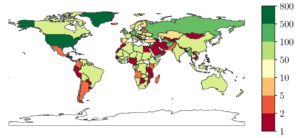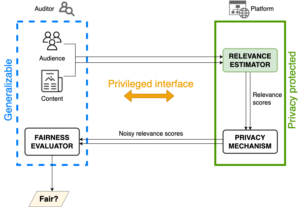Our new paper “Auditing for Racial Discrimination in the Delivery of Education Ads” will appear at the ACM FAccT Conference in Rio de Janeiro in June 2024.
From the abstract:
![Experiments showing educational ads for for-profit schools are disproportionately shown to Blacks at statistically significant levels. (from [Imana24a], figure 4).](https://ant.isi.edu/blog/wp-content/uploads/2024/06/Imana24a_icon-300x152.png)
Digital ads on social-media platforms play an important role in shaping access to economic opportunities. Our work proposes and implements a new third-party auditing method that can evaluate racial bias in the delivery of ads for education opportunities. Third-party auditing is important because it allows external parties to demonstrate presence or absence of bias in social-media algorithms. Education is a domain with legal protections against discrimination and concerns of racial-targeting, but bias induced by ad delivery algorithms has not been previously explored in this domain. Prior audits demonstrated discrimination in platforms’ delivery of ads to users for housing and employment ads. These audit findings supported legal action that prompted Meta to change their ad-delivery algorithms to reduce bias, but only in the domains of housing, employment, and credit. In this work, we propose a new methodology that allows us to measure racial discrimination in a platform’s ad delivery algorithms for education ads. We apply our method to Meta using ads for real schools and observe the results of delivery. We find evidence of racial discrimination in Meta’s algorithmic delivery of ads for education opportunities, posing legal and ethical concerns. Our results extend evidence of algorithmic discrimination to the education domain, showing that current bias mitigation mechanisms are narrow in scope, and suggesting a broader role for third-party auditing of social media in areas where ensuring non-discrimination is important.
This work was reported on in an article by Sam Biddle in the Intercept, by Thomas Claburn at The Register, and in ACM Tech News.
This paper is a joint work of Basileal Imana and Aleksandra Korolova from Princeton University, and John Heidemann from USC/ISI. We thank the NSF for supporting this work (CNS-1956435, CNS-
1916153, CNS-2333448, CNS-1943584, CNS-2344925, CNS-2319409,
and CNS-1925737).


